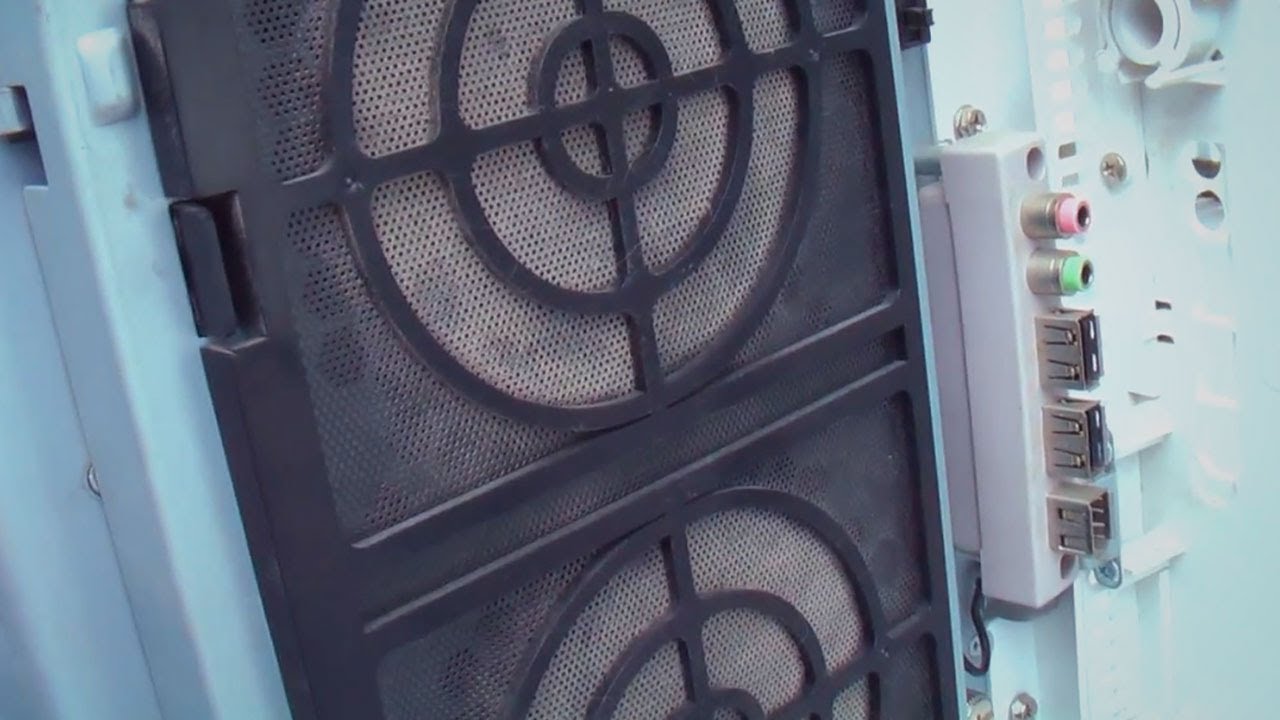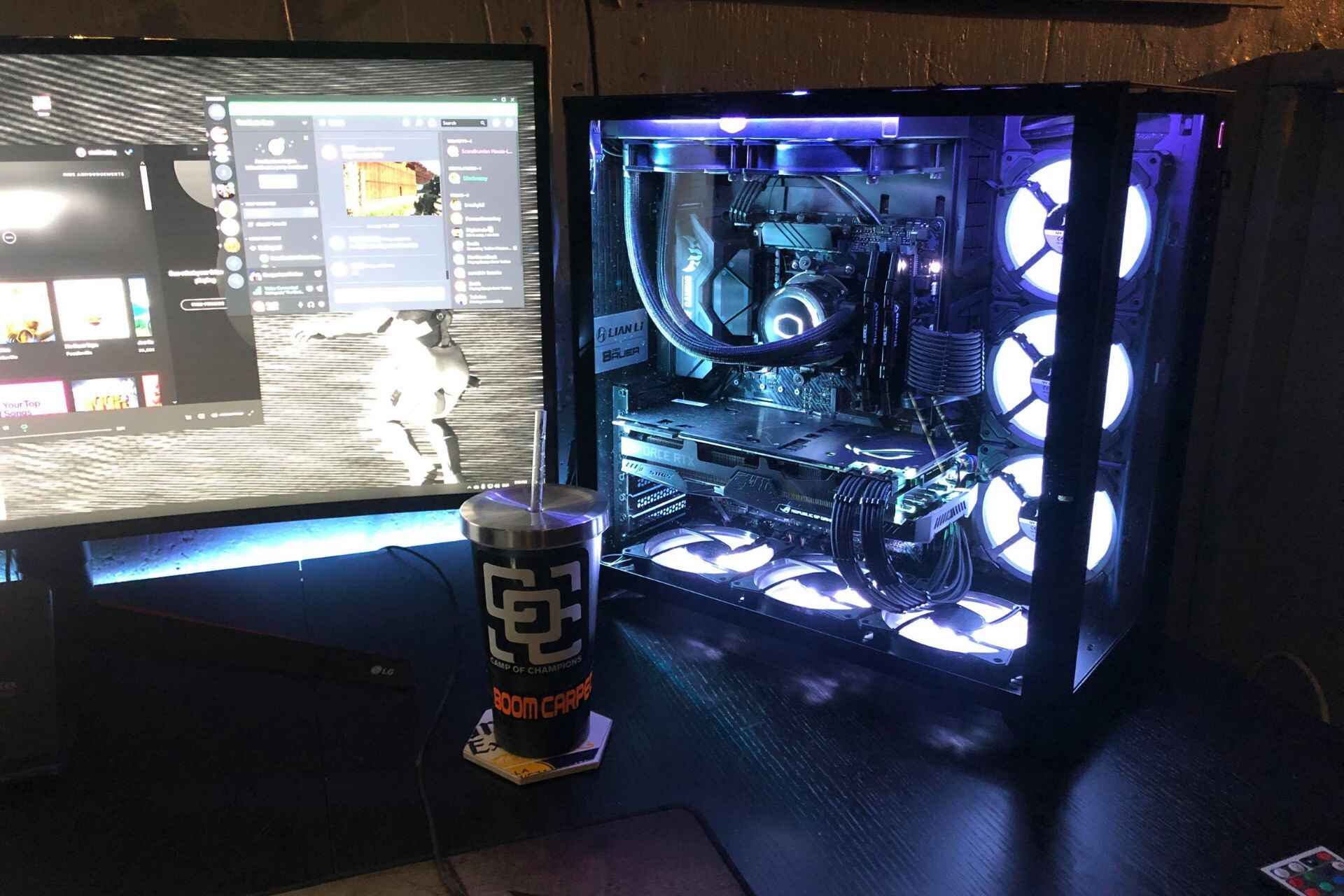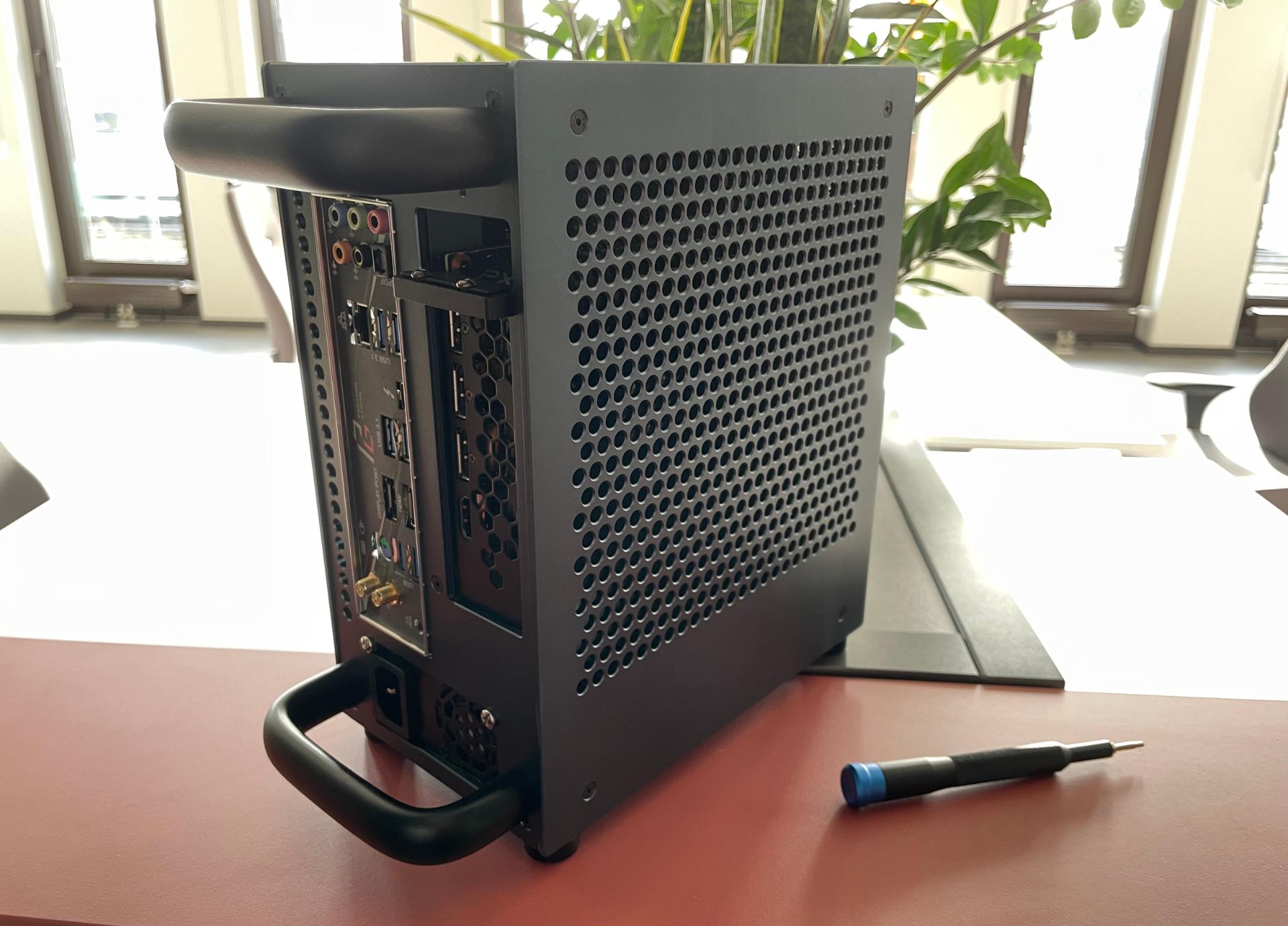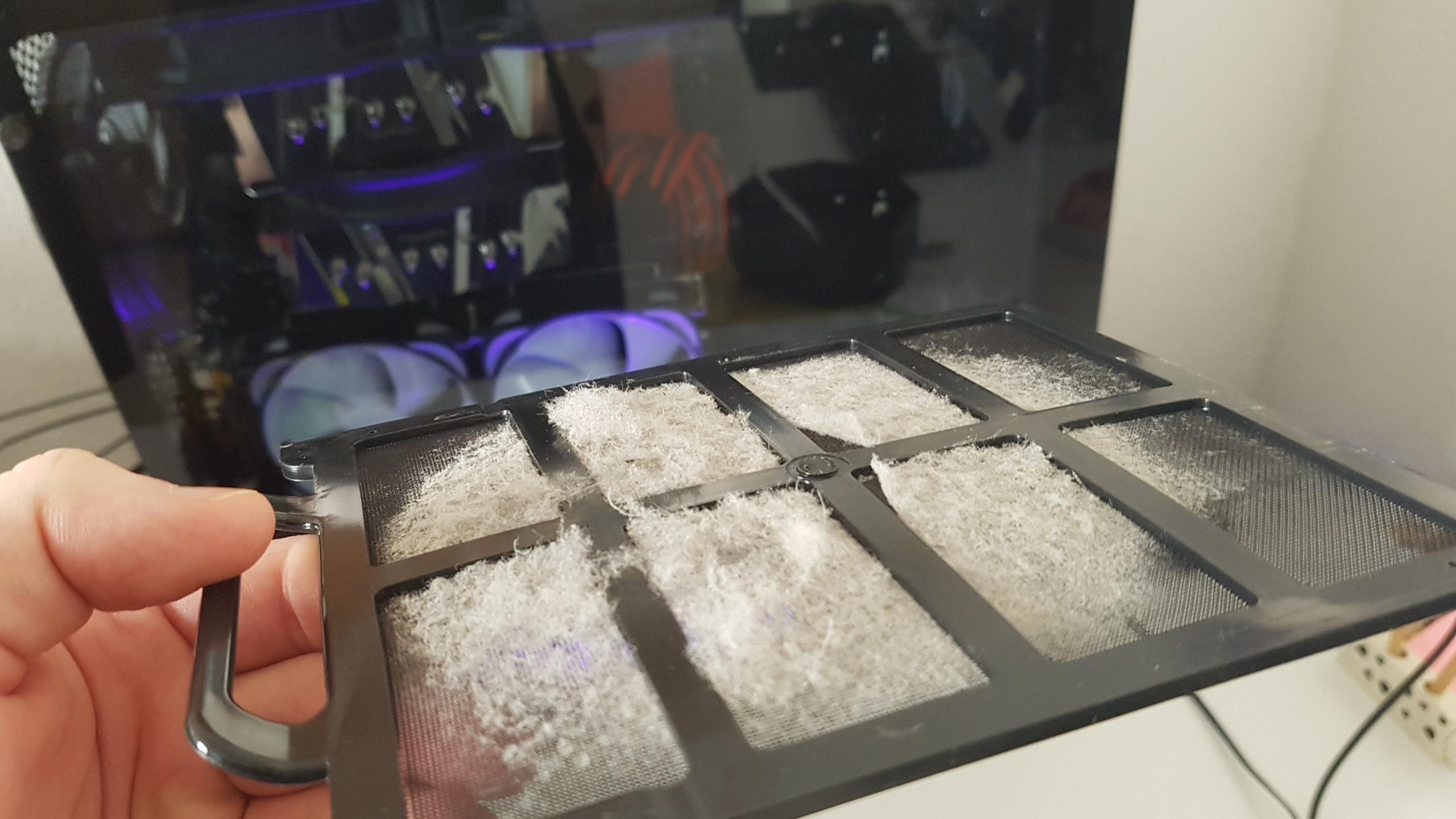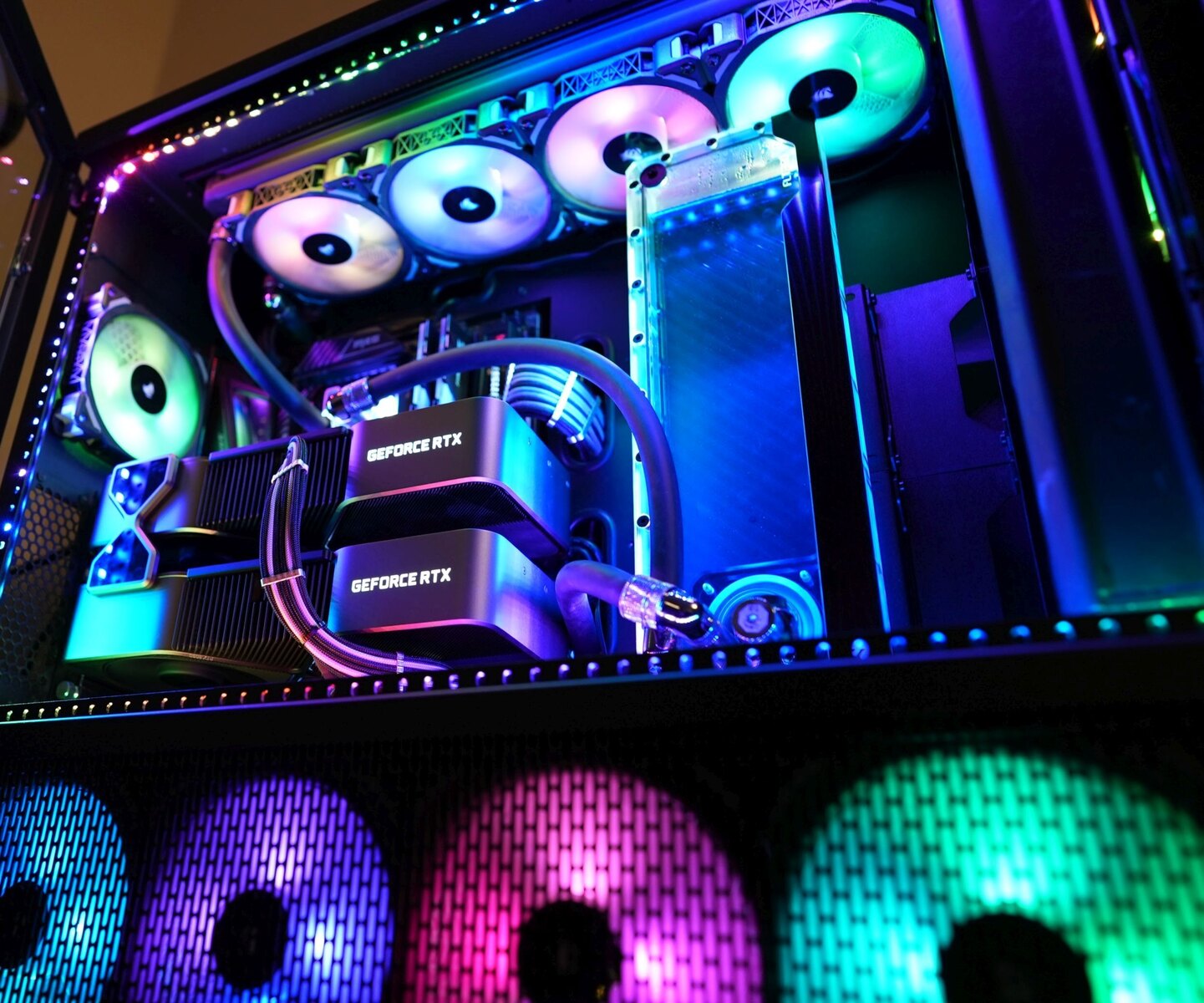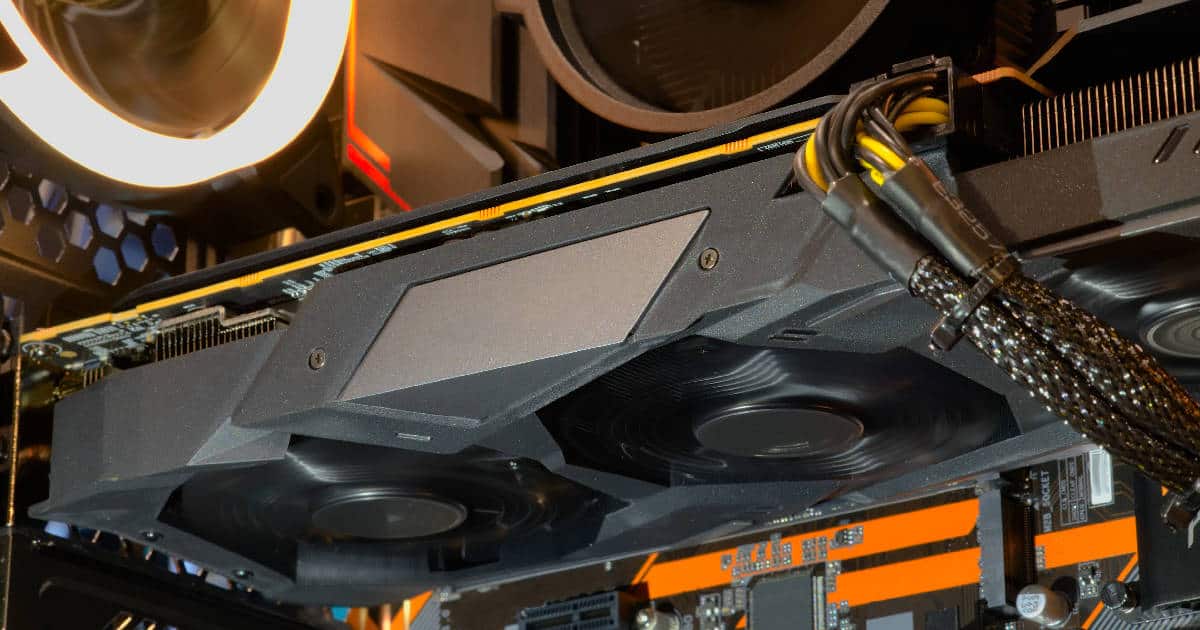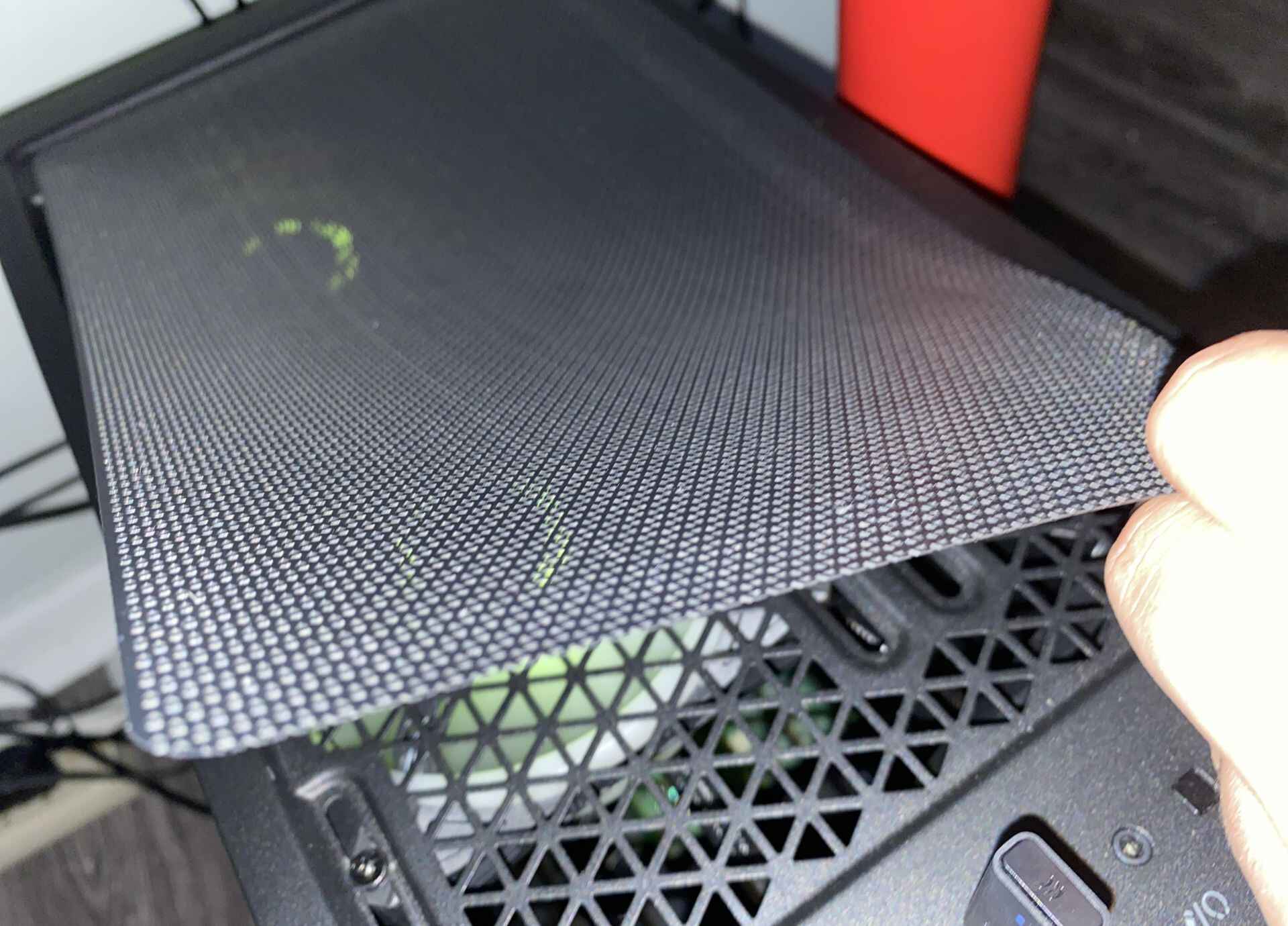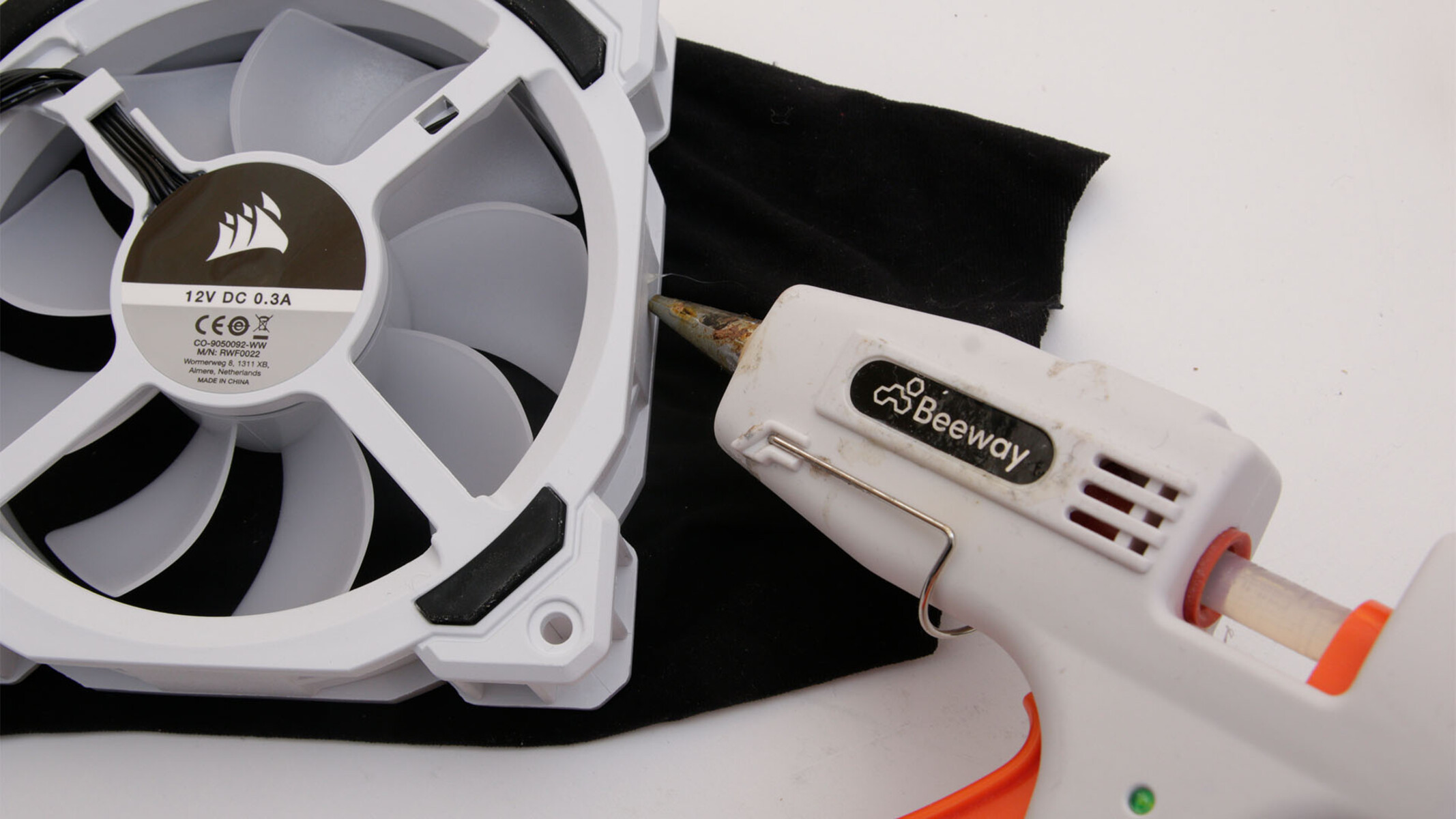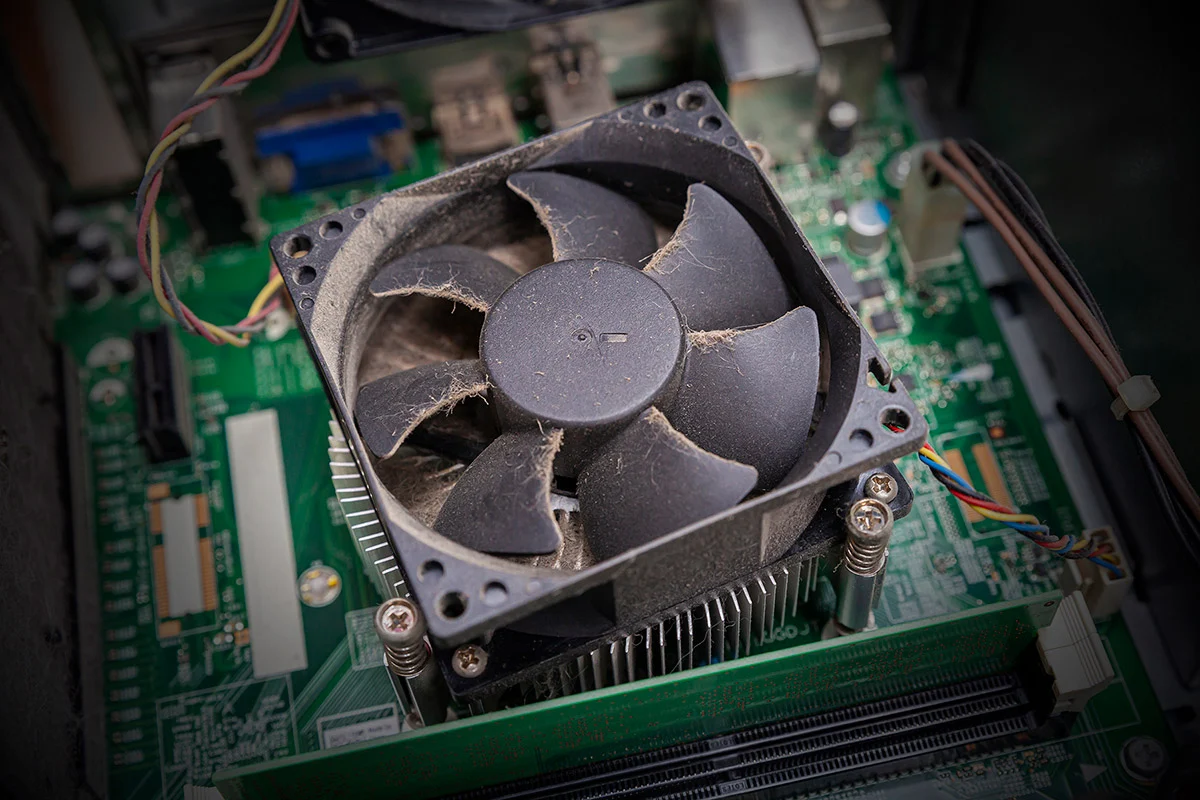Introduction
When it comes to keeping your computer running smoothly and efficiently, one factor that often gets overlooked is the accumulation of dust on the PC case. Dust can accumulate over time and cause various issues, including overheating, reduced performance, and even hardware failure. Therefore, it is crucial to minimize dust build-up on your PC case to ensure optimal performance and longevity.
Dust is a common problem in any environment, and it can easily find its way into your computer, settling on components such as fans, heat sinks, and circuit boards. This accumulation restricts airflow, leading to overheating and potential damage to sensitive electronics. Additionally, the build-up of dust particles can also interfere with the smooth rotation of fans, causing them to become noisy or fail altogether.
Fortunately, there are several steps you can take to minimize dust on your PC case and keep your computer running smoothly. This article will guide you through the process of choosing the right PC case, ensuring proper airflow, maintaining a clean environment, using dust filters, and implementing regular cleaning and maintenance routines. By following these tips and strategies, you can extend the lifespan of your computer while maximizing its performance.
Understanding the Importance of Minimizing Dust on PC Case
Minimizing dust on your PC case is not just about keeping your computer looking clean; it is essential for maintaining its performance and preventing potential issues. Dust is comprised of various particles, including dirt, hair, skin cells, and other debris, that can cause significant problems if allowed to accumulate inside your computer.
One of the primary issues caused by dust is the restriction of airflow. When dust builds up on components such as fans and heat sinks, it creates a barrier that impedes the movement of air. This restriction can cause your computer’s temperature to rise, leading to overheating. Overheating can affect the performance and stability of your system and can even cause hardware failure.
Furthermore, excessive dust can also affect the performance of your computer’s fans. Dust particles can get caught in the blades, impairing their ability to rotate smoothly. This can result in increased noise levels from the fans and potentially even lead to fan failure. If the fans fail, the components inside the PC case will not receive proper cooling, which can lead to severe damage.
Another concern with dust accumulation is that it can create an electrical hazard. Dust particles can conduct electricity and potentially cause shorts or damage to sensitive electronic components. This can result in data loss or even render your computer unusable.
Moreover, dust can also contribute to the degradation of your computer’s performance. As dust builds up on circuit boards and other internal components, it can create a layer of insulation, trapping heat and preventing efficient heat dissipation. This can cause your computer to slow down and become less responsive, affecting your productivity and overall user experience.
By understanding the importance of minimizing dust on your PC case, you can take the necessary steps to prevent these issues. The next sections will discuss various strategies that can help you minimize dust and maintain the optimal performance and longevity of your computer.
Choosing the Right PC Case
When it comes to minimizing dust on your PC case, selecting the right case can make a significant difference. The design and features of the case can affect its ability to prevent dust from entering and accumulating inside. Here are some factors to consider when choosing a PC case:
- Airflow and Ventilation: Look for a case that offers adequate airflow and ventilation options. A case with ample fan mounts and mesh panels will allow for better air circulation, helping to prevent dust from settling on internal components.
- Dust Filters: Check if the case has built-in dust filters. Dust filters are essential as they can effectively trap dust particles before they enter the case. These filters can be easily removed and cleaned, reducing the amount of dust that accumulates inside the case.
- Cable Management: A case with good cable management features can help keep the internal components tidy and organized. Proper cable management not only improves airflow but also makes it easier to clean the case and remove any dust buildup.
- Size and Expansion: Consider the size and expansion options of the case. A larger case with more space between components can help mitigate dust buildup. Additionally, a case with removable drive bays and tool-less designs can make maintenance and cleaning more convenient.
- Noise Reduction: Some cases come with noise reduction features such as noise-dampening panels or rubber grommets to minimize vibrations. These features can prevent dust particles from being dislodged and reduce the accumulation of dust inside the case.
By carefully considering these factors, you can choose a PC case that is better equipped to minimize dust. Remember to prioritize airflow, dust filters, cable management, size, expansion, and noise reduction when making your decision. Investing in a high-quality case that incorporates these features will provide long-term benefits by reducing the amount of dust that enters your PC case and ensuring better overall performance.
Ensuring Proper Airflow Inside the PC Case
Proper airflow is crucial for maintaining a dust-free PC case and optimal performance for your computer components. When airflow is unrestricted, it helps dissipate heat efficiently and ensures that dust particles do not settle on sensitive internal components. Here are some tips to ensure proper airflow inside your PC case:
- Position your fans: Strategically place your case fans to create a positive airflow system that pushes air in one direction and expels it from the case. This helps prevent stagnant air pockets where dust particles can accumulate. Intake fans should be positioned in front of the case, while exhaust fans should be placed at the rear or top.
- Keep internal components clean: Regularly clean your fans, heat sinks, and other components to remove any dust buildup that may impede airflow. Use compressed air or a soft brush to gently clean these components, avoiding any contact with sensitive parts.
- Manage cables: Proper cable management is essential as it helps keep cables organized and allows for better airflow. Use cable tie-downs or routing holes in the case to neatly manage cables, ensuring they do not block the airflow path.
- Utilize fan filters: Install dust filters on intake fans to catch dust particles before they enter the case. These filters can be easily removed and cleaned, preventing dust from accumulating on internal components and reducing the frequency of cleaning maintenance.
- Monitor fan speed: Install software to monitor the fan speed and adjust it if necessary. Running fans at higher speeds can help remove dust particles and improve airflow, but be mindful of the noise levels generated.
- Avoid blocking vents: Ensure that the vents on the PC case are not blocked by objects or placed against walls. This can restrict airflow and lead to increased dust accumulation inside the case.
By implementing these measures, you can help maintain proper airflow inside your PC case, reducing the risk of dust buildup. Regularly cleaning internal components and managing cables will contribute to better airflow and prevent dust particles from settling. Incorporating fan filters and keeping vents unobstructed will aid in maintaining a dust-free environment. Remember, proper airflow not only minimizes dust but also improves the overall performance and lifespan of your computer components.
Keeping the Environment Clean
Maintaining a clean environment is crucial for minimizing dust on your PC case. Even with dust filters and proper airflow, a dusty surrounding can still contribute to dust buildup. Here are some tips to keep the environment clean and reduce the amount of dust that enters your PC case:
- Dust regularly: Regularly dust your workspace, including the area around your computer and any nearby surfaces. Use a microfiber cloth or a duster to remove dust from desks, shelves, and other items in the vicinity.
- Vacuum or mop floors: Keep the floors clean by vacuuming or mopping regularly. By minimizing the dust on the floor, you can reduce the amount of dust that can be stirred up and circulate in the air.
- Control humidity: Maintain a balanced level of humidity in the room. Excessively dry or humid air can increase the amount of dust in the environment. Use a humidifier or dehumidifier to keep the moisture level within a comfortable range.
- Avoid smoking: If you are a smoker, avoid smoking near your computer or in the same room. Smoking introduces harmful particles into the air, which can settle on your computer components and contribute to dust buildup.
- Keep windows and doors closed: Ensure that windows and doors are kept closed as much as possible to prevent dust from entering the room. This is especially important in areas with high levels of dust or pollution.
By maintaining a clean environment and minimizing the amount of dust in the surrounding area, you can significantly reduce the risk of dust entering your PC case. Regular dusting, cleaning floors, controlling humidity, and avoiding smoking will contribute to a cleaner workspace and a dust-free computer environment. Remember, a clean environment not only helps minimize dust, but also promotes better overall hygiene and a healthier working environment.
Using Dust Filters
One effective way to minimize dust accumulation on your PC case is by utilizing dust filters. Dust filters are specially designed mesh screens that are placed over the intake fans or vents of your PC case. These filters act as barriers, preventing dust particles from entering and settling on the internal components. Here are some key points to consider when using dust filters:
- Select the right filters: Ensure that the dust filters you choose are compatible with your PC case and fan sizes. Measure the dimensions of your case’s intake fans or vents to determine the appropriate size of dust filters needed.
- Install filters properly: Dust filters are typically designed to be easily removable and washable. Follow the manufacturer’s instructions to correctly install the filters over the intake fans or vents. Make sure the filters fit securely and do not block airflow.
- Clean filters regularly: Dust filters should be cleaned on a regular basis to maintain their effectiveness. Remove the filters from the case and gently wash them with mild soap and water to remove accumulated dust. Allow them to dry completely before reinstalling.
- Consider additional filters: In addition to the built-in dust filters on your PC case, you can also use standalone air purifiers or room air filters to further reduce dust in your environment. These devices can help capture airborne dust particles before they reach your PC case, providing an extra layer of protection.
Using dust filters is an effective method to minimize dust on your PC case and protect internal components from dust buildup. The filters act as a barrier, preventing dust particles from entering and settling on delicate components. Regular cleaning and maintenance of the filters will ensure their continued efficiency. By incorporating dust filters into your PC setup, you can significantly reduce the amount of dust inside your case and maintain better overall system performance.
Regular Cleaning and Maintenance
Regular cleaning and maintenance are essential to keep your PC case free from dust and ensure optimal performance. Here are some tips to help you maintain a clean and dust-free computer:
- Clean the exterior: Wipe down the exterior of your PC case regularly using a microfiber cloth or a soft, lint-free cloth. This will remove any surface dust that may have accumulated.
- Open the case: Periodically, open your PC case to access the internal components for thorough cleaning. Make sure to power off the computer and disconnect it from the power source before opening the case.
- Use compressed air: Use compressed air to blow away dust from hard-to-reach areas, such as fans, heat sinks, and corners of the case. Ensure that you hold the canister upright and use short bursts to avoid damaging any components.
- Clean fans and filters: Remove any accumulated dust from fans and dust filters. Use a soft brush or compressed air to gently clean the fan blades, and wash dust filters with mild soap and water. Ensure that everything is dry before reinstalling.
- Inspect components: While cleaning, inspect each component for any signs of damage or wear. Replace any damaged or faulty parts as necessary to prevent future issues.
- Reassemble carefully: When reassembling your PC, ensure that all components are properly secured and the case is closed tightly. This will prevent dust and debris from easily entering the case.
- Follow a maintenance schedule: Create a regular maintenance schedule to perform cleaning tasks. Depending on the environment, computer usage, and dust levels, cleaning every 3-6 months is generally recommended.
By incorporating regular cleaning and maintenance into your computer routine, you can prevent excessive dust buildup and ensure the longevity and optimal performance of your PC. Keeping the exterior clean, regularly opening the case for thorough cleaning, using compressed air, and inspecting components will help keep your PC case dust-free. Following a maintenance schedule will ensure that cleaning tasks are done on a regular and timely basis, reducing the risk of dust-related issues and improving the overall lifespan of your computer.
Conclusion
Minimizing dust on your PC case is essential for maintaining optimal performance, preventing hardware issues, and extending the lifespan of your computer. By following the strategies outlined in this article, you can effectively minimize dust and keep your PC case clean. Choosing the right PC case with proper airflow, utilizing dust filters, ensuring proper ventilation, keeping the environment clean, and implementing regular cleaning and maintenance routines are all crucial steps in achieving a dust-free computer setup.
Remember, dust can restrict airflow, lead to overheating, and cause damage to sensitive components. By selecting a PC case with good airflow, utilizing dust filters, and managing cables properly, you can prevent dust particles from settling on internal components. Regular cleaning of the PC case, fans, and filters, as well as maintaining a clean environment, will further minimize dust buildup. Implementing these practices will not only improve the performance and longevity of your computer but also contribute to a healthier and more productive working environment.
It is important to incorporate these strategies as part of your regular computer maintenance routine. By doing so, you will ensure that your PC operates at its best, free from the negative impacts of dust accumulation. Take the necessary steps to keep your PC case clean and enjoy the benefits of a dust-free and efficient computer system.







